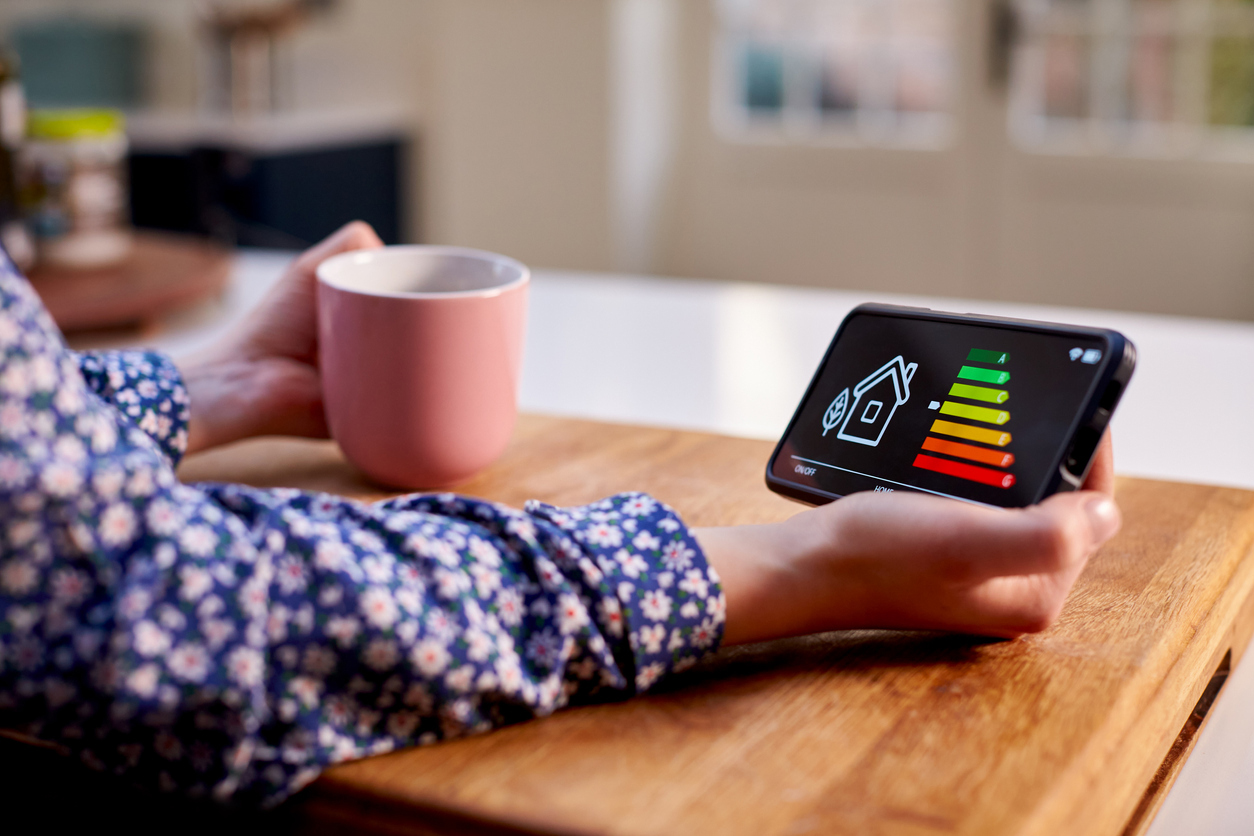With energy bills continuing to increase, now is a great time to ensure you’re taking every step possible to manage your energy consumption at home. We’ve put together some simple ways you can save energy at home, helping you to mitigate the impact of higher energy costs…

Turn off electrical devices at the wall
When you turn a TV off, most will simply go into standby mode, meaning it will still be drawing electricity even when it’s off. In fact just one TV can use £16 of electricity on standby every year.
Although it’s only a trickle which equates to a few pounds, it all adds up, so we’d strongly recommend turning appliances, particularly larger appliances like televisions, games consoles, printers, PCs and laptops off at the wall when not in use.
Turn your heating thermostat down
Even turning it down by a degree or two can have a big impact on your home heating bills. Experts state that you could save as much as £100 per year by turning the thermostat down by just 1 degree!
Another thing you can do is make sure you’re not heating your home when its empty. If you’re out of the house in the daytime at work, or out and about a the weekend or even away on holiday, there’s no need to leave your usual heating programme on.
A typical household might have their heating come up first thing in the morning, mid afternoon and then again in the evening. Instead you could reduce the amount of time the heating comes on for or even drop it down to coming on for a short period of time just once a day, particularly if you’re not at home.
Turn off the lights
This sounds like a no brainer, but when you pay attention at home, you’ll realise that you probably leave lights on more frequently than you realise. In the daytime, in particular, make sure curtains and blinds are wide open to make the most of natural daylight, reducing the need to turn on the lights.
As a rule of thumb, if you’re not in a room, there’s no need for the lights to be on. Make the switch to LED lightbulbs too as these are much more energy efficient and can last for anything from 4 to 6 years, making them a truly cost-effective option.
Don’t heat rooms you’re not using
This is another obvious tip but one that’s often overlooked! If you have central heating you’re likely to have radiators in each room of your home which can be individually controlled, so think about the rooms you use rarely, or not at all.
The obvious culprits are the office, spare room and even the dining room. If a room isn’t used daily, you really don’t need to have the radiators on, so switch the thermostats on your radiators way down in rooms that you use rarely.
Fill up the washing machine
Many washing machines have half or small load options, but in reality they still use almost as much energy as a full load, so we’d always recommend ensuring you have a full load and aren’t washing things unnecessarily. Most people will wear jeans for a example only a couple of times before popping them in the washing machine, but expert recommend jeans should be washed as infrequently as possible and only when they look dirty or smell!
We’re not suggesting that this is the right approach for all items of clothing, but getting one more wear out of clothing you’ve only worn for a short period of time can help cut down on the laundry so you’ll use the washing machine less.
Take advantage of eco mode
Both dishwashers and washing machines increasingly include an “Eco” mode. Some people avoid using this mode however as a cycle on eco mode can often take much longer. The increased length of operation time can sometimes seem counterintuitive, but actually, washing for longer, but at lower temperatures can provide significant energy savings.
Empty the kettle
When you’re making a cup of tea or coffee, instead of filling the kettle up and then making just 1 or 2 cuppas, just boil as much water as you need to use. That way, you won’t be heating water you don’t need unnecessarily.
Improve loft insulation
Improving your loft insulation is one of the more effective ways of reducing the heating needs of your home. Like most homeowners though, your loft is likely to be packed full of many years’ worth of family life, not to mention old clothes, games, sports equipment and goodness knows what else!
If you’re going to reinsulate your loft, you’ll need to empty it out and will need to store the contents of your loft whilst It’s reinsulated. Hiring storage crates from us here at Crate Hire means you’ll have somewhere safe to store the contents of your loft whilst you get on with the job.
Our crates are strong and sturdy and can be stacked to save on space too, making the ideal choice for storing the contents of your loft.
You might also be interested in reading about how to move home or office the eco friendly way.



